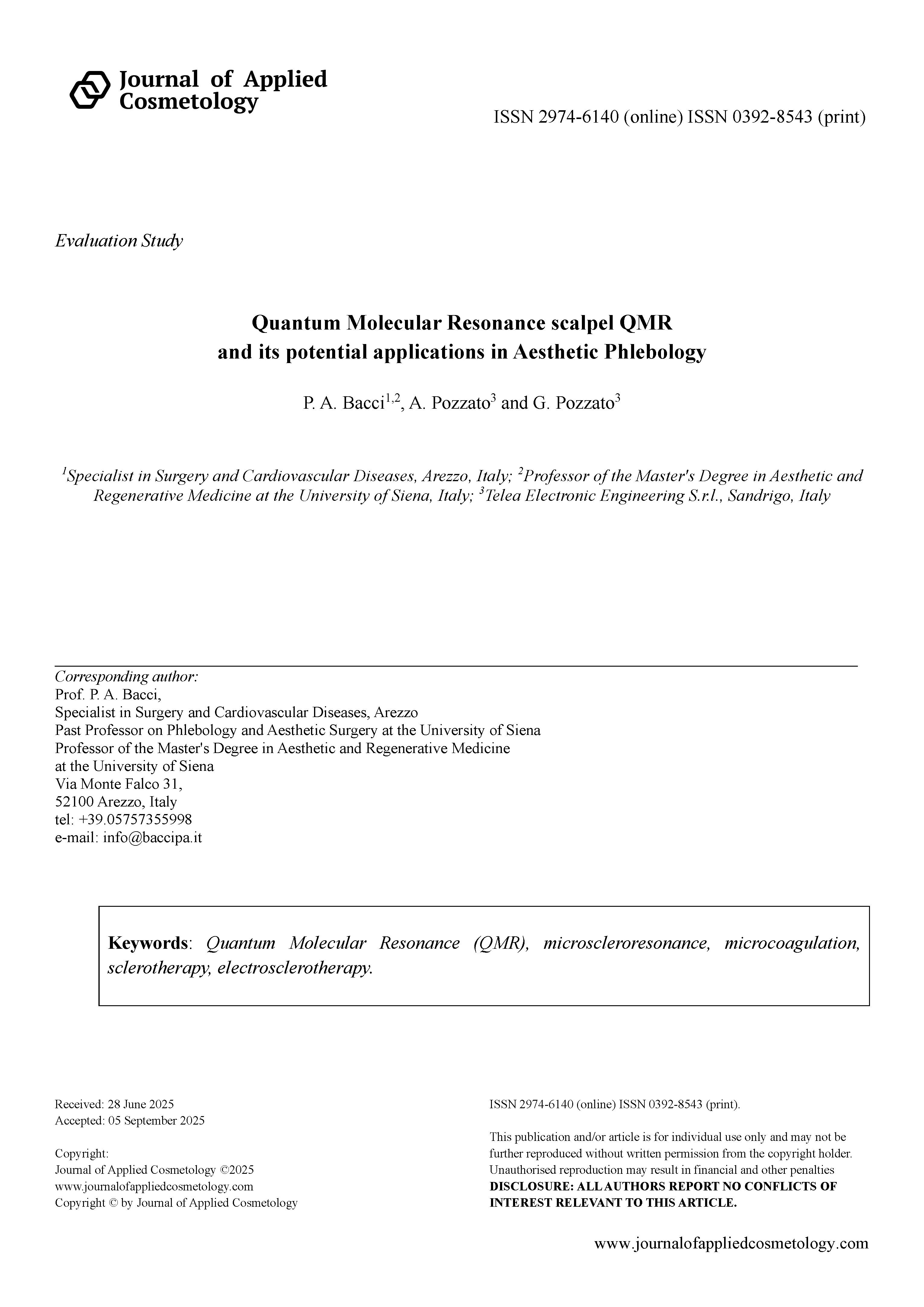Quantum Molecular Resonance scalpel QMR and its potential applications in Aesthetic Phlebology
Keywords:
Quantum Molecular Resonance (QMR), microscleroresonance, microcoagulation, sclerotherapy, electrosclerotherapyAbstract
Officially recognized internationally, sclerotherapy is the primary treatment for varicose veins, spider veins, and telangiectasias. Electromicrocoagulation is also used to treat red and blue capillaries. This work aims to evaluate the effectiveness of a novel microelectrotherapy strategy in reducing complications associated with thermal damage. Advances in bioelectronic engineering have led to new treatment options through Quantum Molecular Resonance (QMR), a novel strategy applied in regenerative medicine for organ and tissue regeneration by adult stem cell activation, in physiotherapy due to its strong anti-inflammatory and regenerative effects, in neurosurgery and other surgical fields for its potential in developing a "low-temperature QMR electric scalpel”. This new type of electric scalpel can also be used in phlebology to treat dermal capillaries and varicosities, thanks to its adjustable power and precise timing, which help reduce thermal damage. The use of microcoagulation with a QMR-based bioelectronic scalpel has shown promising results, significantly reducing skin thermal heating during the treatment of capillaries, varicosities, and telangiectasias. When combined with microsclerotherapy, it reduces the risk of inflammatory responses and pigmentation, giving rise to a new technique called "QMR microscleroresonance", which represents a promising advancement in Aesthetic Phlebology.
Downloads









